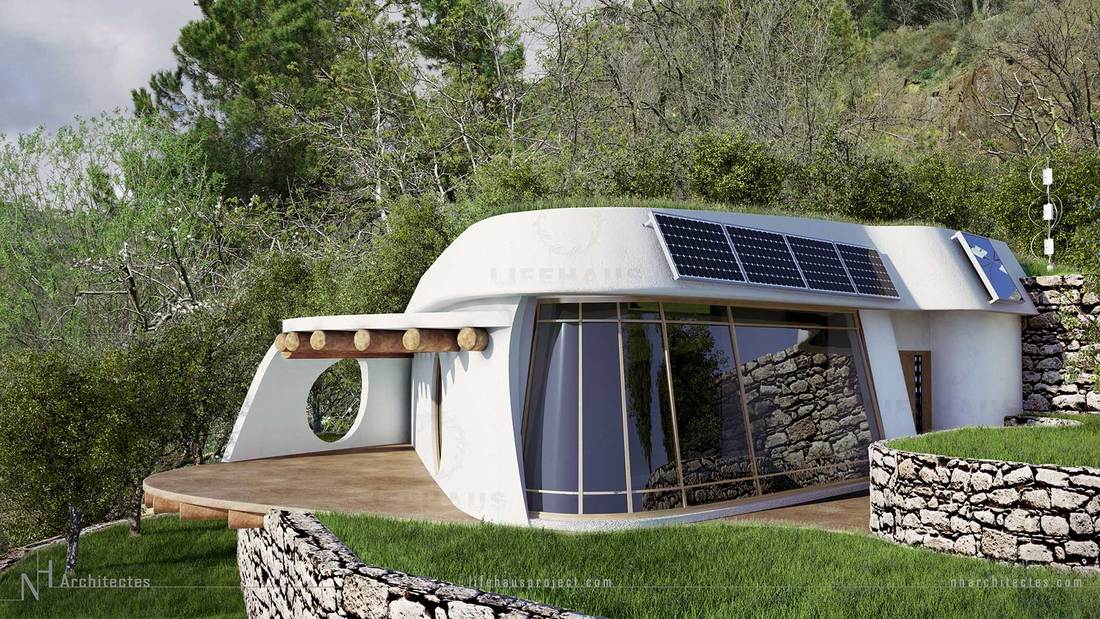Smog, mass deforestation, and mountains of trash, it’s almost as if humanity is making a genuine effort to destroy the one and only planet we can survive on. Thankfully though, there are some who are taking heed and creating more sustainable communities and minimizing the harm we have been causing. Some, even, are not too far from home. A group of passionate entrepreneurs have taken the lead in Lebanon when it comes to building sustainable homes and lessening our carbon footprint.
Nizar Haddad graduated with a specialized degree in architecture from the Academie Libanaise des Beaux Arts (ALBA) and founded NH-Architects in 2011. In 2014, he began working on the LIFEHAUS project when he met Nadine Mazloum, founder and editor-in-chief of Newsroom Nomad. Along with them is Paul Baroudi as project manager, who holds an MBA and extensive experience from Earthship Academy.
So how does this come together? While it is still in its first stages of experimentation, it consists of a studio with a living room, mezzanine, terrace, greenhouse and a technical room. However, future models will cater different variants whether it is emergency relief dwelling that refugees could benefit from or a more luxurious selection.
LIFEHAUS tackles different aspects of a home:
- Comfort of heat. It is easily provided for since the design is meant to contain and preserve the thermal energy of the dwelling. It does not use radiators, boilers or ACs. There are a number of pipes within the ground that ensure the house is naturally ventilated with minimum heat loss.
- Energy, collected via water, wind and sunlight. These provide potentially limitless sources if used properly. Being energy self-sufficient will also require the use of optimizing techniques to regulate energy consumption such as bicycle washing machines and LED bulbs for light.
- Water. LIFEHAUS promotes the collection of rainwater and using it for all needs. Rainwater is collected in a tank that fits the shelter. Grey water, which is rich in minerals, can be used for irrigation of interior gardens. “Black water” is used to irrigate non-consumable vegetables and trees after a special filtration process.
- Food can be produced including meat, fruits and vegetables using different methods. Organic agriculture and aquaponics play an important role as they create their own tiny ecosystem with its natural pest repellents instead of pesticides. Greenhouse agriculture is another approach designed to provide food within cold seasons and expand the variety of plants. A system of hydroponics can allow for optimal use of space for plantation as well through diverse techniques like ebb&flow and waterculture.
The surface area required for any of these activities depends on what the buyer wants of course, influencing the cost of each LIFEHAUS. While it can be cheaper to build your own, the LIFEHAUS team advises people to not do so, but instead to have a professional or expert on site at all times to ensure the process is correct and safe. Regardless, the “optimized passive heating and cooling systems” as well as the sustainable forms of electricity acquisition, would indeed reduce the overall cost. This is the added value that comes with a LIFEHAUS.
On the other hand, it clearly requires some changes in lifestyle, as sustainable energy is pricier than fossil fuels at the moment, it is more economical in the long term and protects the environment for future generations to survive.


